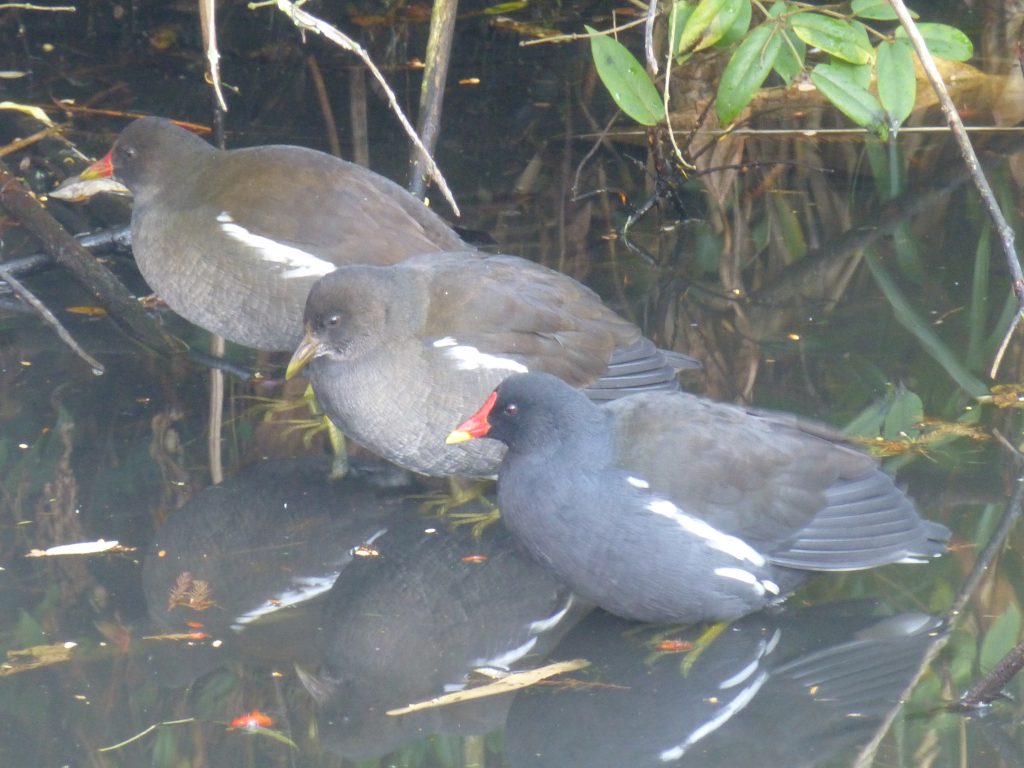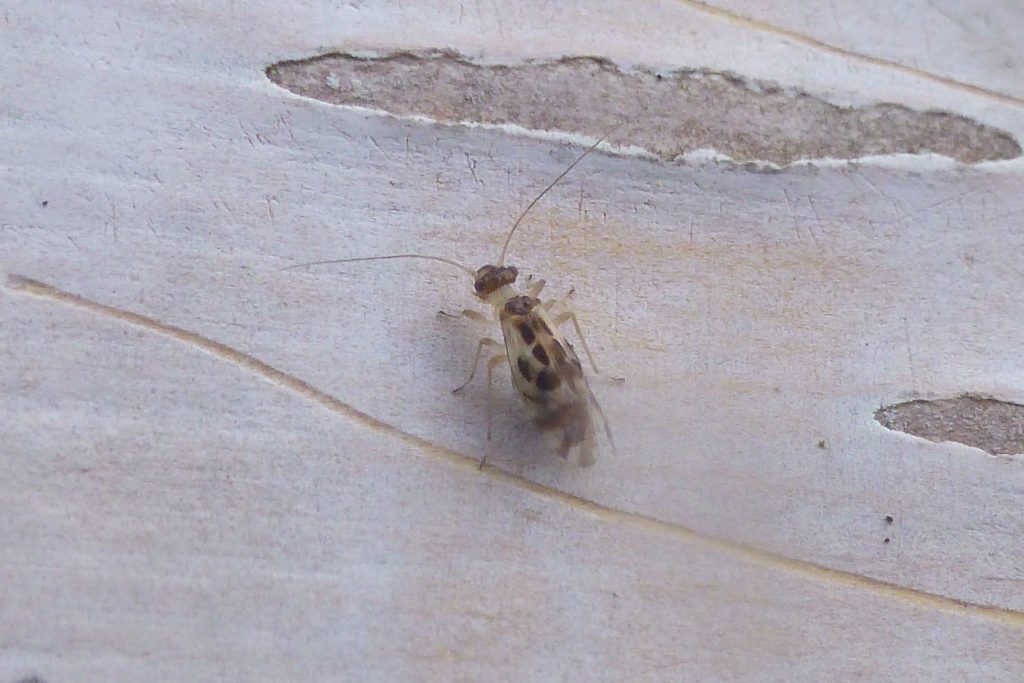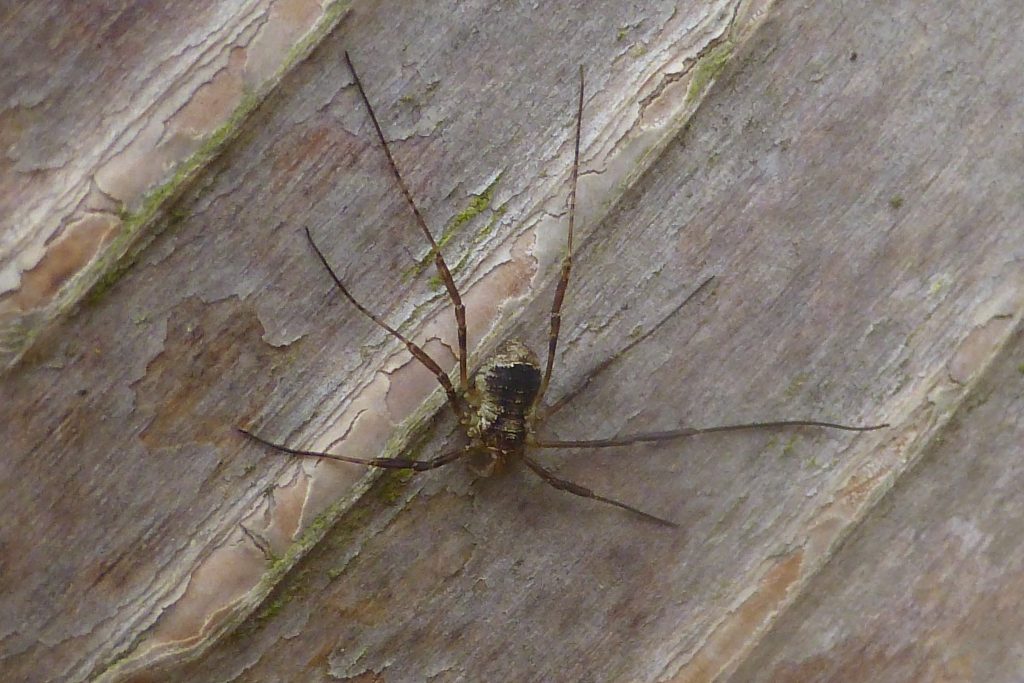
Three Moorhens (Gallinula chloropus) sheltering on a very frosty day, 24 November 2016. The one at the front is an adult, the other two are juveniles with the one at the back (with some red on the bill base) being slightly older than the middle one. Photo Robert Mill.
November 2016 started very mild, as October had ended, but by the 10th it had turned much colder. The second part of the month was cold and there were some hard frosts. However, overall it was mostly a dry month except for periods of heavy rain between the 10th and 17th. It was also a very sunny month for the time of year. Another three records were added to the Garden’s wildlife list, taking it from 853 to 856.
Mammals Perhaps the strangest addition to the Garden’s list for some time was a House Mouse that was found dead on the road between the south edge of the rock garden and the Garden perimeter around midday on 25th. Presumably it had been dropped by some predator. By the time I got there around an hour later to investigate no trace of it could be found. Thanks to Tom Christian who found it and mentioned it to me.
Birds Thirty-three bird species were recorded in or over the Garden during November. A Kingfisher, or perhaps more than one, visited the Garden on at least ten occasions between 12th and 22nd, the first since the spring. On four dates the bird was definitely a male but on the remaining six it could not be sexed, hence the uncertainty over whether one or two birds were involved. Signs of autumn’s onset included a Curlew flying over (23rd) and the arrival of a few winter thrushes: as well as Mistle Thrush on 4th and small numbers of Redwing on several dates from 5th onwards, there seemed to be more Blackbirds around, particularly males, and some of them may have been continental immigrants. A Blackcap was seen again at the Chinese Hillside on 22nd. Jackdaws seem to be visiting the Garden more frequently and there were two further sightings on 4th and 22nd. However, for the third month in a row no Feral Pigeons were seen. The complete list of 33 species recorded during November was: Blackbird, Blackcap, Black-headed Gull, Blue Tit, Bullfinch, Carrion Crow, Chaffinch, Coal Tit, Curlew, Dunnock, Goldfinch, Great Spotted Woodpecker, Great Tit, Greenfinch, Grey Heron, Herring Gull, Jackdaw, Kingfisher, Lesser Black-backed Gull, Long-tailed Tit, Magpie, Mallard, Mistle Thrush, Moorhen, Oystercatcher, Redwing, Robin, Siskin, Song Thrush, Tawny Owl, Wood Pigeon, Wren.

Graphopsocus cruciatus, a barkfly, on birch bark. New Garden record, 22 November 2016. Photo Robert Mill.
Insects and other invertebrates: Far fewer plants were in bloom outdoors during November than in October and in consequence invertebrate activity dropped off markedly. No butterflies were seen and the only moth record, other than as leaf mines, was an exceptionally late example of Blastobasis adustella on the back wall of the herbarium building on 23 November. The only sightings of bees were Honey Bee on 1st and Buff-tailed Bumblebee on 4th. No wasps were seen in the Garden during November although a few were still out and about elsewhere. Hoverflies were also entirely absent. Dying and falling leaves meant fewer opportunities to record leaf miners but the mines of nine leaf-mining flies and six leaf-mining moths persisted. However, shield-bugs remained active, with Gorse Shield Bug (5th), Forest (Red-legged) Shield-bug (21st, 22nd), and Parent Bug (5th) all being recorded, as well as Birch Catkin Bug (also on 5th). No ladybirds or other beetles were spotted. Three different species of barkfly were seen on birch bark on 22nd: Ectopsocus briggsi (also recorded on 28th), Ectopsocus petersi (new Garden record) and Graphopsocus cruciatus (new Garden record). More about these barkfly records is being published in a separate post. Two harvestman species were seen: a female Leiobunum rotundum on 21st and an Oligolophus hanseni on 28th. A few galls of four mite species continued to persist on remaining leaves of lime and alder.

